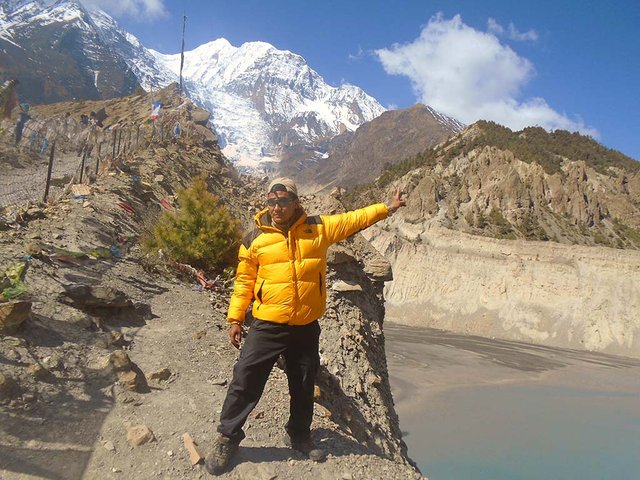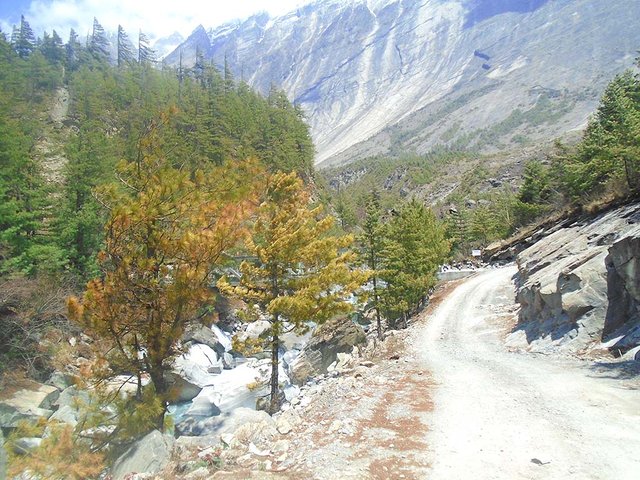Annapurna Circuit trekking trail leads us to experience breathtaking mountain views, cultural immersion of Tibetan people, and their lifestyle. But high altitudes, remote trails, and unpredictable weather demand preparation. Here's your ultimate guidebook to a safe and unforgettable trek.
A Local Sherpa Guide Taking a Photograph Edge of the Lake

Off Road to Annapurna Circuit

Gear Up for Success:
Train Like a Pro: Start a training program 3 months prior, focusing on cardio, strength, and endurance. Simulate the trek with loaded backpack hikes.
Acclimatize Wisely: Gradual ascent is key. Plan rest days, especially at higher elevations, to adjust to the thinner air.
Stay Healthy on the Trail:
Vaccinations Don't Wait: Ensure you're up-to-date on routine vaccinations. Consider additional ones like Hepatitis A & B, Typhoid, and Rabies.
Fight Altitude Sickness: Know the symptoms: headache, nausea, dizziness. Walk slowly, stay hydrated, and avoid drinking alcohol and smoking while you are at a high altitude. Consult your doctor about Diamox for prevention.
Fuel Your Adventure:
Stay hydrated (3-4 liters daily) and eat a balanced diet rich in carbs, protein, and fat. Pack energy-boosting snacks like nuts, bars, and dried fruits.
Safety First:
Insurance is a Must: Get travel insurance covering high-altitude trekking, medical care, and emergency evacuation.
Guides & Porters: Your Trusted Team: Hiring a guide and porter supports the local community and provides valuable assistance in any emergencies.
Be Prepared for Anything:
Carry a list of emergency contacts, including your embassy, local emergency services, and your trekking agency.
Pack Smart, Trek Far:
Layer Up for Comfort: Pack moisture-wicking base layers, insulating mid-layers, and waterproof outer layers. Don't forget to bring a hat, gloves, and a down jacket.
Invest in Your Feet: Get high-quality, waterproof trekking boots. Break them in beforehand to prevent blisters. Pack extra socks.
First Aid Essentials:
Carry a kit with band-aids, antiseptic wipes, pain relievers, blister treatment, and any personal medications. Consider a high-altitude first-aid manual.
Trekking Poles:
Your Stability Partners: These tools improve balance and reduce strain on knees during climbs and descents.
Navigate with Confidence:
Pack a map, compass, and GPS device. practice well how to utilize them before starting your journey
Stay Connected (Optional):
A satellite phone or local SIM card with data allows you to connect with loved ones and emergency services if needed.
**Choose the Perfect Season: **
The best trekking windows are pre-monsoon (March-May) and post-monsoon (September-November). Be well prepared for the sudden weather forecast.
Weather Updates are Key:
Check the forecast daily.
Adjust your plans if severe weather approaches.
Respect the Environment and Culture:
Leave No Trace: Minimize waste using a reusable water bottle and purification tablets. Avoid single-use plastics.
Be a Culturally Conscious Trekker: Dress modestly and seek permission before photographing people.
Mindset Matters:
Positive Vibes Only: Trekking at high altitudes can be challenging. Stay positive and confident, learn things daily basis, and, enjoy the journey
Listen to Your Body: Don't force yourself too hard. Take short breaks when needed and communicate openly with your guide and group about your health